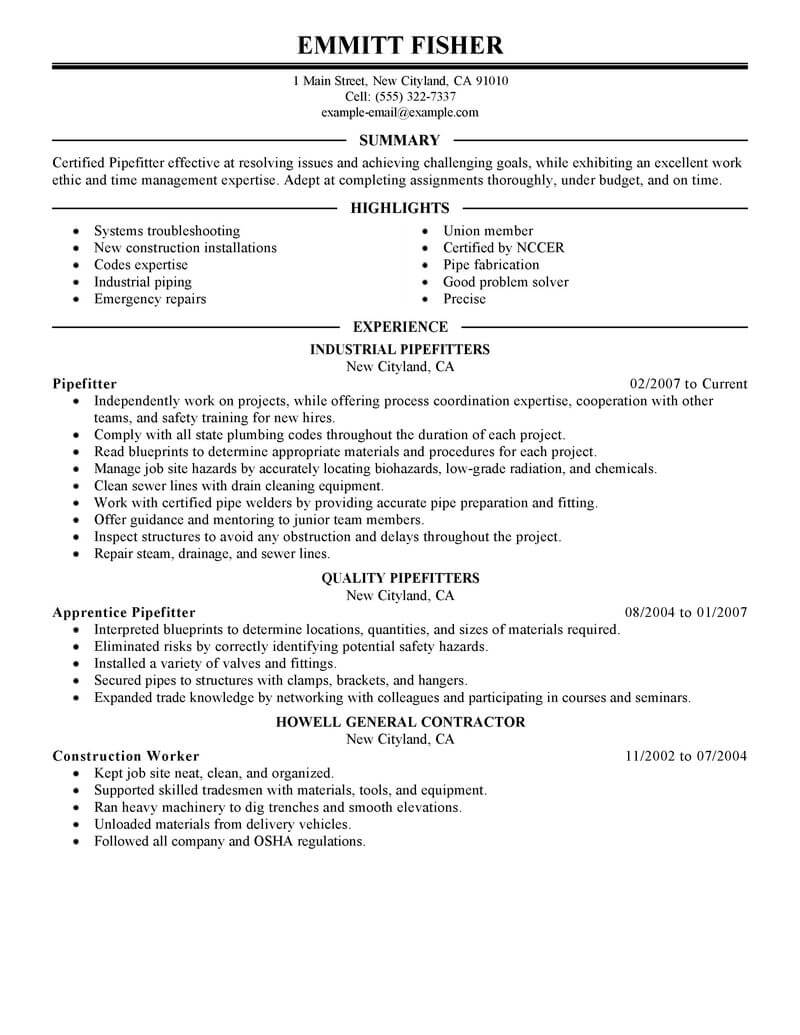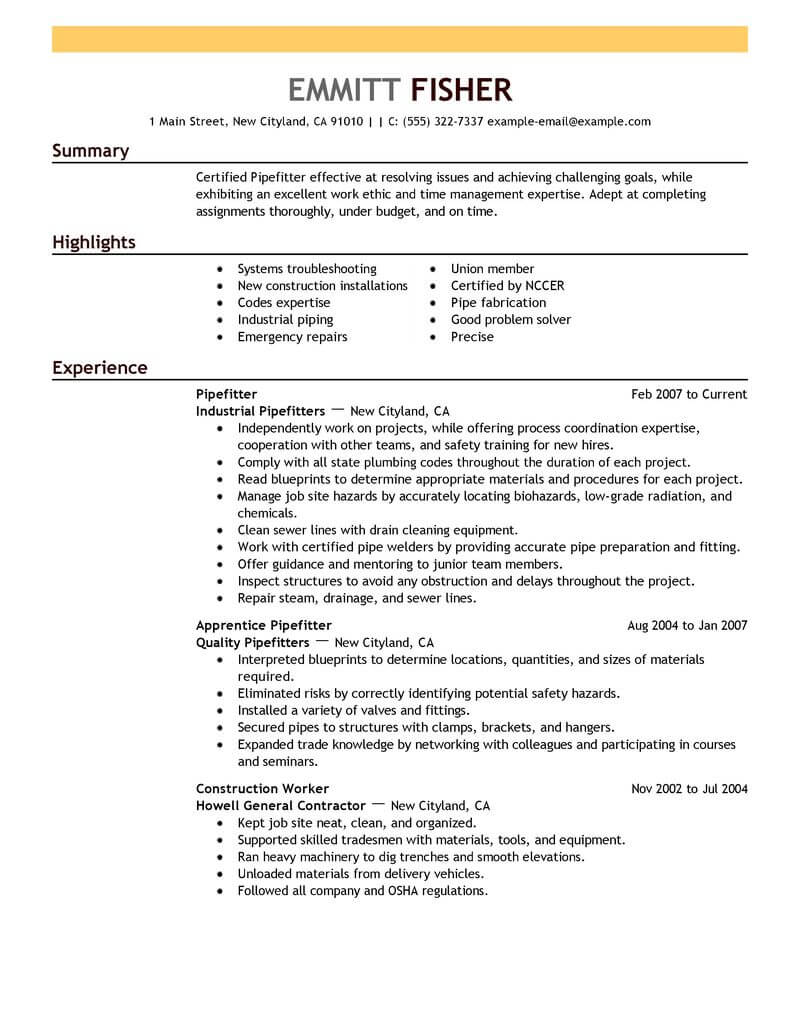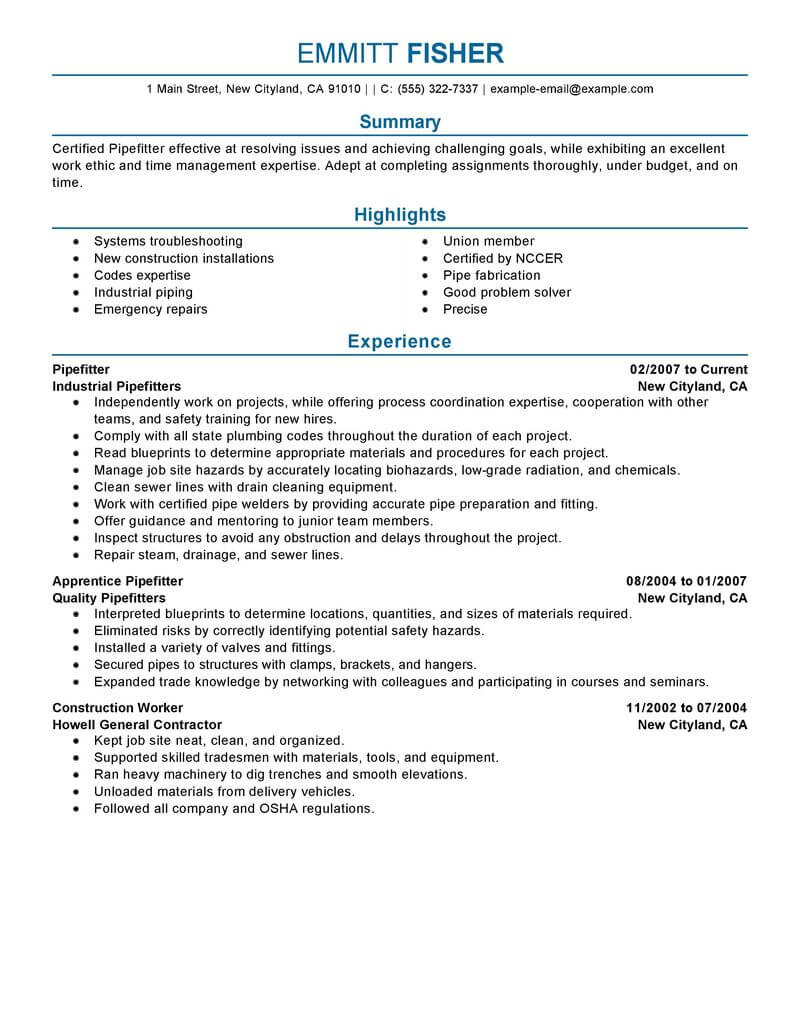Best Pipefitter Resume Example
Published: Thursday 27th of July 2017; Words Count: 1400
Employers in search of qualified pipefitters tend to search for experience, professionalism, and knowledge that overlaps with the specific demands and quirks of the position in question. If your skills align with employer’s needs (residential, commercial, team projects, individual work, gas, fluid, etc.) then you’ll want to make this clear in your cover letter and resume. Review this pipefitter resume example and use it as a model while drafting and editing your own document. Break each element of your profile into separate subheadings that show off your education, past positions, active certifications, and special skill sets.
Pipefitter Advice
To become a pipefitter, you’ll need to be skilled, experienced, and have a solid professional resume. The resume examples we’ve compiled below are a great first step in creating your own pipefitter resume. Just click on any of the designs below then create your own resume using them as a guide. There are great jobs out there, and with the right resume, you’ll be in excellent position to get hired sooner!

Resume Tips for Pipefitter
Finding jobs as a pipefitter means taking the right kind of action and also having the right mindset. The tips below can help keep you on track during your job hunt.
1. Stay positive. While you may feel down for finding yourself temporarily out of work, remember that your situation is just that: temporary. Joining support groups and meeting others working towards your same goal can keep you motivated and put things in perspective.
2. Keep an open mind. Although you might have your sights set on a particular outcome, you might look into fields and industries that previously did not interest you.
3. Make a plan. Devising a plan can help break down the process of finding a new job more manageable and will maximize your productivity. Start by setting smaller goals that can be accomplished on a weekly or daily basis. This could mean sending out a certain number of resumes per week.
4. Keep up the networking. Don’t hesitate to reach out to personal or professional contacts that could lend advice or insight into a particular industry. This information will be of great value and you never know where your next lead could come from.
5. Make use of social media. Websites such as Facebook, Twitter, and Linked in are excellent ways to expand your network and can help potential employers find your professional profile.

Pipefitter Job Seeking Tips
When it comes to finding jobs as a pipefitter, your resume works as your calling card. Make sure that your resume is in top shape by following the tips below.
1. Don’t exceed two pages. With the exception of academics or doctors who may be using curricula vitae (CVs), there is no need to write more than two pages. Keep your writing relevant and concise.
2. Do align the text flush left and use bullet points for listing items. Following these simple formatting standards will increase the organization and readability of your writing.
3. Don’t rely on generic language. Avoid using overly used phrases such as hard worker or team player, as they take away from the uniqueness of your professional voice.
4. Do introduce your work history section with a Summary of Skills section. This offers your reader with an at-a-glance overview of your professional qualifications.
5. Do list your work history in the following recommended order: title of position, employer, city and state of employer, and employment dates.





